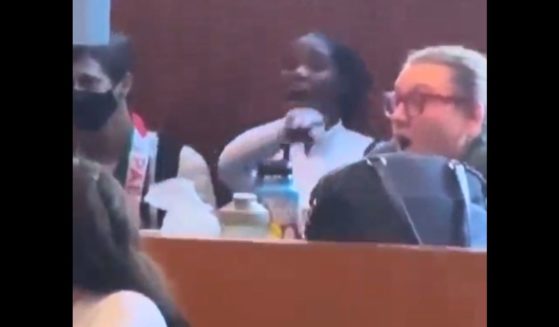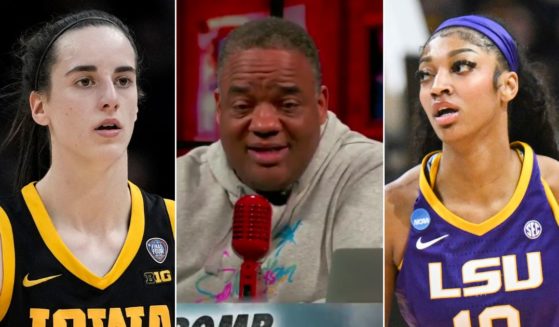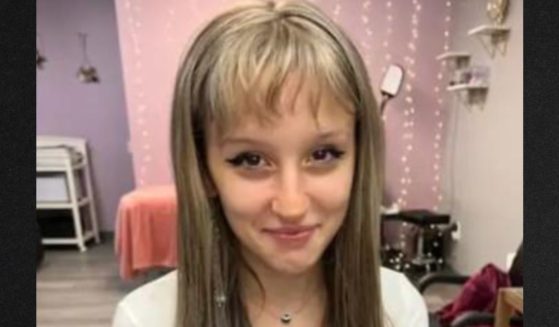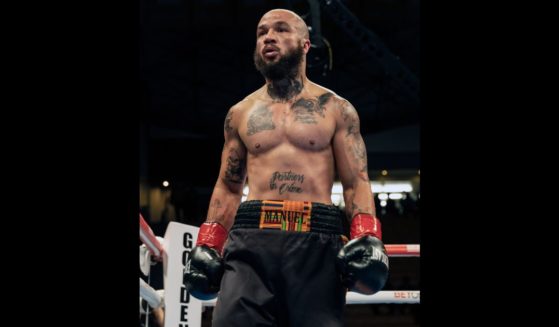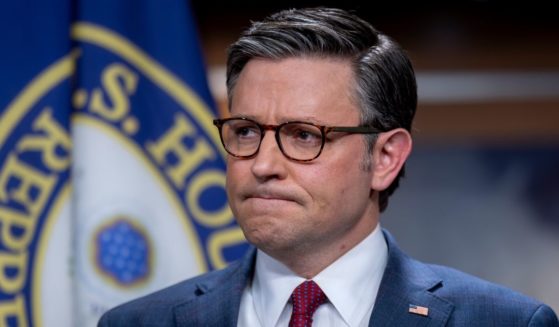University May Take Down Decades-Old Murals Because There Are Too Many White People in Them
In 1953, Art Sherman was asked to paint a mural for the University of Rhode Island’s new student union, the Memorial Union.
The Memorial Union earned its name because returning World War II veterans who enrolled in the school, along with other URI community members, had raised the funds for the building and dedicated it to those who were left behind on battlefields in Europe and the Pacific.
According to WJAR-TV, Sherman, a member of the class of 1950, was responsible for drawing cartoons on the walls of the previous student union, a Quonset hut. He was brought back in 1953 as the Memorial Union was being constructed to paint murals.
His murals were painted at the time when there were less than 2,000 students at the URI and most of them were white, WJAR reported. His art depicted life at the time — service members coming back to Rhode Island, a scene at the beach, a class reunion.
The Memorial Union was dedicated in 1954. The murals have never been considered controversial up until recently.
Now, their future is unclear, in part because some students believe there are too many white people in them.
“I have received complaints about the murals that portray a very homogeneous population,” Kathy Collins, the school’s vice president of student affairs, told WJAR. “The persons painted and depicted on the wall are predominantly white and that does not represent who our institution is today.”
“Some of our students have even shared with us they didn’t feel comfortable sitting in that space.”
“It really depicts a snapshot in time of the university’s history, important history, showing a person returning back to campus from World War II and other historical moments,” she said.
On Sept. 2, WJAR reported that the school was planning to take the murals down.
“We’ve made a really difficult decision as we aim for the university’s future and we think about who are our students today, and who are our students going to be tomorrow,” Collins said.
Collins felt the events of this year inspired the school to make a change.
“I think we have to recognize the horrible incidents and the tragic murders of George Floyd, Breonna Taylor and most recently Jacob Blake in Kenosha, Wisconsin, during this … heightened time, and we as an institution have to look at the systems in place across this institution that maybe are not representing who we are today and representing the true diversity of URI today,” she said.
Sherman, now 95, worked at the URI for 30 years as a professor of physical education.
“Oh, I loved painting that, yeah,” Sherman said. “I never had any formal education in painting, by the way, I just used to cartoon.”
As for the uncomfortable whiteness of it?
“Well, it depicted that era,” Sherman said. “A lot of students, friends of mine, would come by and say, why don’t you do this, why don’t you do that? So, that’s what I did, so everybody chipped in.”
His daughter said she didn’t want the university to throw that era out the window.
“It’s an opportunity for the University of Rhode Island to do the right thing. It’s an opportunity for them to capture a moment in time in their history,” Pamela Sherman said.
“It should be, let’s look at our history and let’s maintain the timeline of that history over the many generations,” she added.
“We would love to see new artwork, but let’s put them alongside and show a timeline of the evolution of this campus, the evolution of this university, let’s show it as a timeline and how it’s changed over the years.”
Not to mention the fact that she comes from a family full of URI alumni.
“It’s terribly upsetting and we grew up with those murals being there,” she said.
“It’s an opportunity for the University of Rhode Island to embrace its history, it’s an opportunity for it to show a timeline, a progression and a change over decades, and we never want to forget our past.”
If sitting next to a mural can effect your emotional well being, you need professional help.
“Some of our students have even shared with us they didn’t feel comfortable sitting in that space.” https://t.co/0MZAUrRm4B via @campusreform— AngelsWalk! (@LAWGermany) September 9, 2020
“Wouldn’t it be a mistake if we look back 100 years from now and say, ‘Isn’t it a tragedy that we lost this artwork?’” Pamela Sherman said. “It’s like any work of art, especially a painting, seeing a picture of it, there’s just no comparison with seeing it live.”
And that’s the thing: One of the things that might replace it is a digital wall — not a fixed piece of art.
“Certainly, pictures of these murals will be included in any celebration of space and place that is the Memorial Union,” Collins said.
“This is not at all to say that the dedication and the work that Dr. Sherman has done for this institution we recognize and we will always recognize that going forward.”
Following backlash to the school’s original decision, the URI backtracked somewhat.
“As of Friday, the future of the murals, which have enlivened plaster walls in Memorial Union hall for decades, remained uncertain. Previously, the university had announced plans for a renovation and for new decor in the building, which is dedicated as a tribute to the fallen of World War II and the Korean War,” the Providence Journal reported Friday.
The university, meanwhile, issued a statement Thursday insisting it supports veterans and saying it would spend the next few weeks trying to figure out what to do.
“The necessary renovation of the Memorial Union brought to light the issue of the condition of the murals,” the statement said. “During this process, we explored options for preservation of the murals, including removal of the plaster walls on which the murals are directly painted. The construction method of the wall — plaster and lathe — does not permit removal without damage to the murals and to the walls.
“The University has enlisted the assistance of Professor and Chair of the Department of Art and Art History Ronald Onorato to share his expertise with regard to mural preservation, with the goal of incorporating the work of the artist, Dr. Arthur Sherman. As Professor Onorato notes: Most importantly, we should strive, as an educational institution not toward removing history but moving toward contextualizing the mural to use the original mural as a way to open discussions about our University culture in the 1950s and how it differs from who we are now.”
“The University will announce plans on how it will proceed by the end of September.”
One hopes that they ultimately decide not to tear down the murals. Doing so would be no way to honor the past and the veterans who helped pay for the Memorial Union.
Art Sherman himself seems a bit philosophical on whether or not his artwork stays (“That’s a good question,” he told WJAR. “Time goes by and things change”) but we shouldn’t be.
Yes, this doesn’t look like URI does today — because it was a different era. The class of 2020 will look nothing like the class of 1950.
There’s nothing prima facie offensive in the pictures. Instead, this is an instance where people seem upset because, for some individuals, all of the past and most of the present can’t live up to their exigent wokeness.
But the problem isn’t in the murals, it’s in their quasi-moral code. The inability to sit in a room with a painting that features white people doesn’t condemn the artwork. It condemns the individual.
There are ways the present can be represented without the destruction of the past.
Truth and Accuracy
We are committed to truth and accuracy in all of our journalism. Read our editorial standards.

